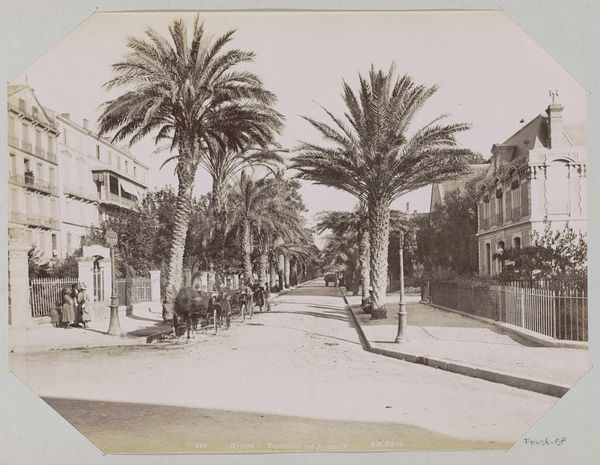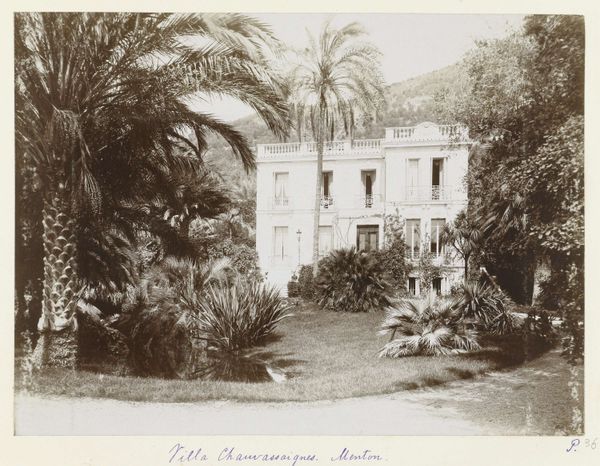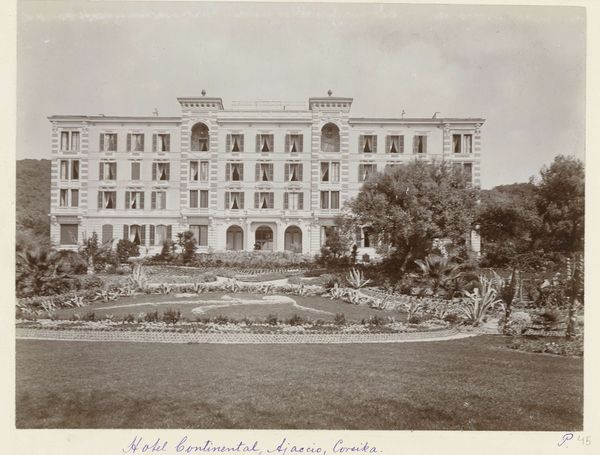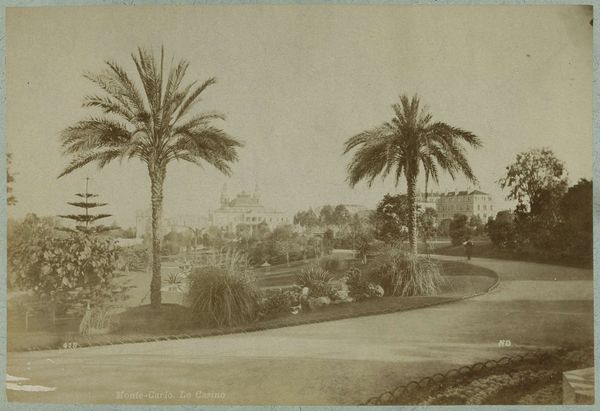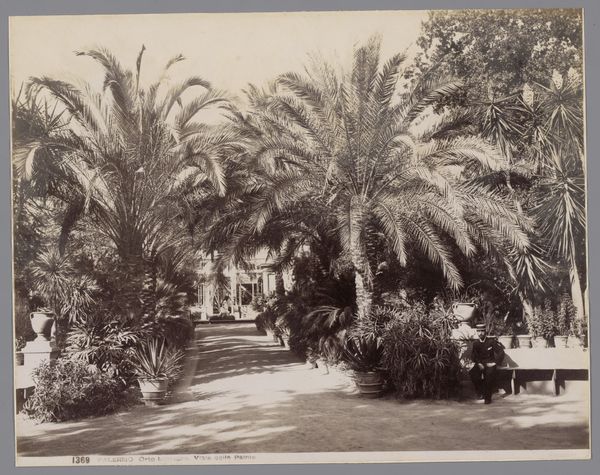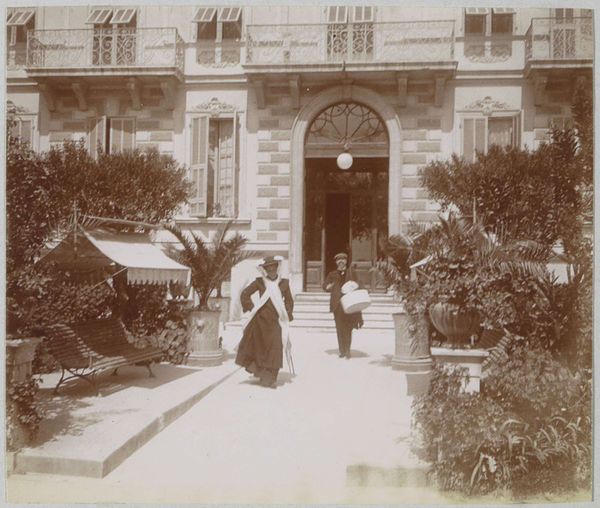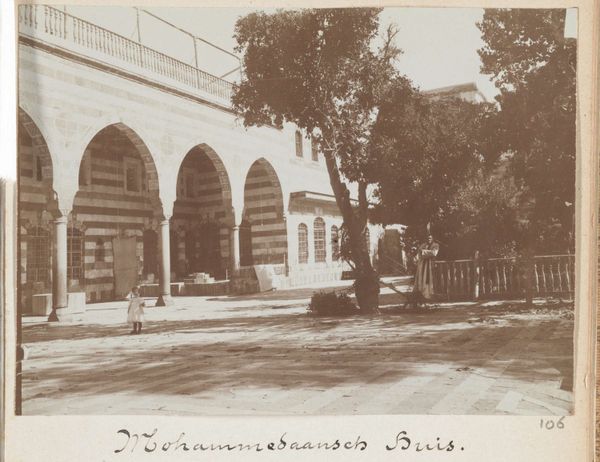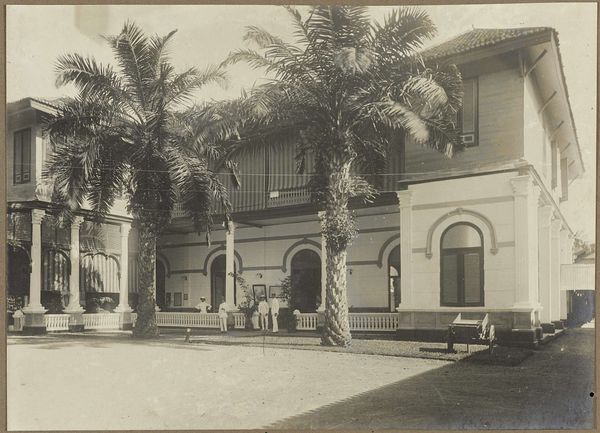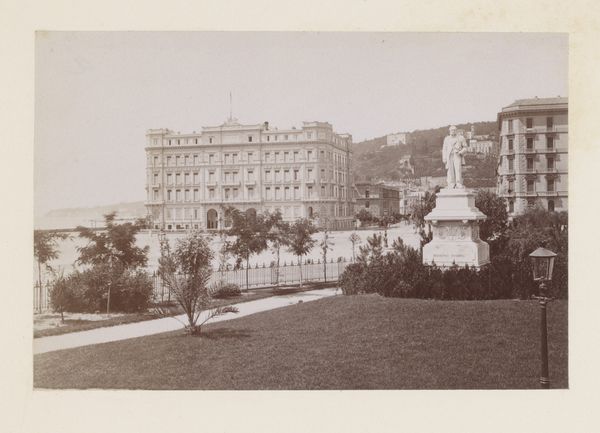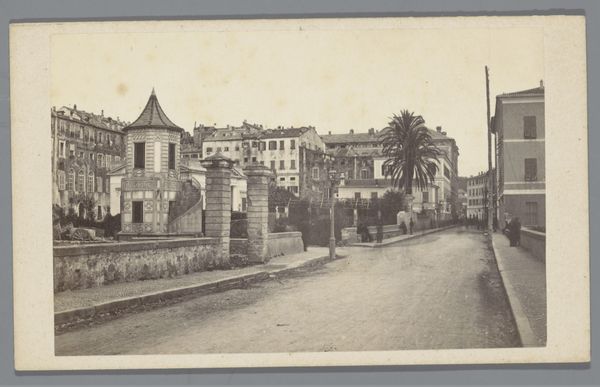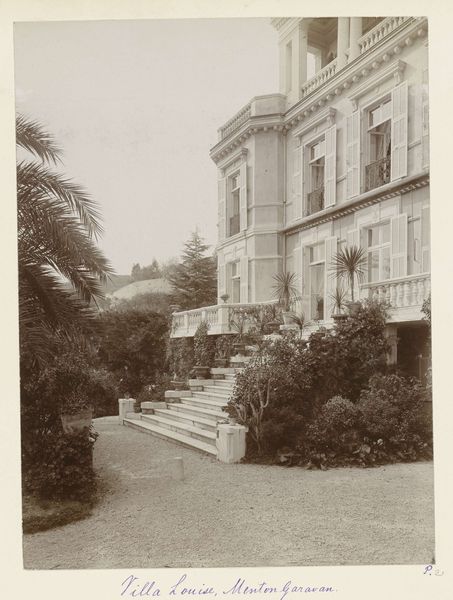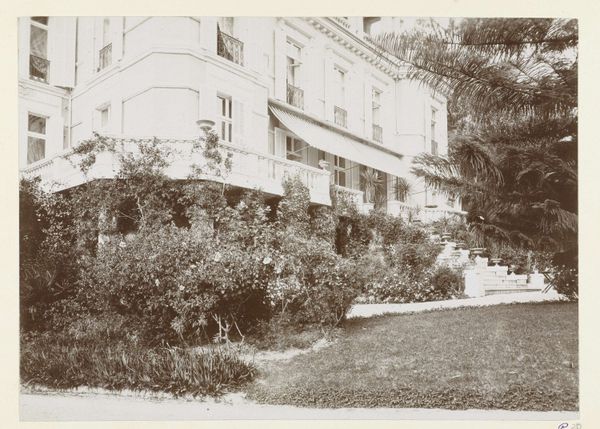
photography, albumen-print
#
landscape
#
photography
#
orientalism
#
19th century
#
cityscape
#
watercolor
#
albumen-print
Dimensions: height 82 mm, width 110 mm
Copyright: Rijks Museum: Open Domain
Curator: Welcome. We're looking at an albumen print by Johannes Lodewijk Heldring from 1898, titled "Tuin van het Shepheards Hotel in Caïro," depicting the garden of the Shepheard's Hotel in Cairo. Editor: My first impression is one of subdued elegance, with its muted sepia tones and the orderly yet overgrown quality of the garden. The high vantage point gives the composition a layered feel, almost theatrical in the way the garden leads up to the hotel. Curator: Absolutely, it’s important to consider the layers here—both in the image and historically. Heldring was part of a wealthy Dutch family, and photographs like this reflect a specific Western gaze on Egypt, popular during the Orientalist movement. The hotel itself was a symbol of colonial luxury and a meeting point for European travelers and elites. Editor: I’m struck by how Heldring has carefully arranged the elements within the frame. The verticals of the palm trees contrast with the horizontality of the building, creating a sense of balance and visual rhythm. And then there’s the texture—the feathery palm fronds, the dense foliage, the smooth facade of the hotel—each captured in exquisite detail through the albumen process. Curator: Those palm trees become like sentinel markers between cultivated spaces. In this image they invoke not just place but a period; the hotel represented adventure and discovery but also the imbalanced power structures of that time. Its later destruction, well after this photo was taken, is poignant given its symbolism of luxury and colonial presence. Editor: Precisely. The photograph serves as a carefully constructed tableau. What at first seems like a candid snapshot is revealed, upon closer inspection, to be a considered study in light, form, and texture. It documents a place, a time, and perhaps, an ideology. Curator: Indeed, its lasting appeal invites us to think critically about the complex relationships between travel, representation, and historical memory. It offers both aesthetic pleasure and historical inquiry. Editor: Well said. It leaves you wondering what unfolded both inside that legendary hotel and in the world outside its doors at that very moment.
Comments
No comments
Be the first to comment and join the conversation on the ultimate creative platform.
